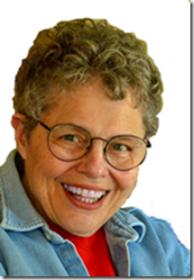 Consider This
Consider This
By
LC Van Savage
GIVE US THIS DAY
Bread figures pretty big in our lives. Important to us today, it figures strongly in our world history too. (Remember that old "manna from heaven" apologue? Yep. Bread.)
Letís face it; without bread, weíd be unable to perform simple food tasks. For example, slices of it keep peanutbutter and jelly from falling through our fingers and splatting onto the floor. Without bread, itís obviously impossible to play "round and round," the wiping up of the gravy on our stew plates with a chunk of good bread, the doing of which was considered bad manners. (Why??) Bread can shine up bathroom fixtures and a slice put into a plastic bag with I forget exactly what will keep it fresh. Cheese? Apple? Well whatever, itís something.
"Bread" is a pseudonym for money. Itís the staff of life. Jesus managed to feed the five thousand from a couple of loaves with fish chasers. Dinner in solitary consists of bread with a bit of washdown water. Bread, wine and roses is a perfect combination to win over the hardest of hearts, if quickly followed by something lots more expensive such as gems. Give us this day our daily. Give me liberty or give me bread. No, that canít be right. And on a more personal bread level, my boys and I had some pretty lively softball games with the baguettes I baked.
My husband "Mongo" was born in Scranton, PA back in the days when bread was the real deal and figured very large in all meals. Never in his young life did he eat a piece of that well- known ******bread or any other white tasteless mushy pap. The breads his family served up were solid, good, healthy, filled with twigs, grit, seeds and actual flavor.
However, there was one Scrantonian bread not so well received by moi. Desperate to get Mongoís family to like me, I pretended to love the Lithuanian bread my future Lithuanian father in law would bring home from the local bakery. In fact I hated it, because for one thing, it choked me. That bread was shaped like a cinder block with the same color and weight exactly, and the same texture and taste exactly. After a couple of slices were hacked from it, there really was no amount of butter that could make it chewable or swallowable, and believe me I slathered on as much as I could without, I hoped, being too obvious.
Toasting it was no help either; it simply turned the slice into hot, sliced cinder block. Ugh. Dreadful. I soon learned that the only way this good family could truly enjoy their bread was if it made their gums bleed. That stuff did.
But I do admit that gooshy, blah white bread does have its place in Breadom. For example, itís an odds-on favorite for making stuffing for Thanksgiving bird innards. You take a loaf of the worst and cheapest white bread there is, spread it all over your counters around October 15th, and by Thanksgiving eve, itís stale enough to cube, mix with other ingredients, and turn into a truly luscious excelsior. And thereís really no way a bologna, mayo and lettuce sandwich can work on rye or pumpernickel; itís gotta be on soft white bread.
Of course mushy white bread makes an excellent face mask; you know, two holes for the eyes, one for the nose and one for the mouth through which the more gross-out of us can thrust a food-coated tongue.
And of course food fights donít cut it unless soft white bread is balled up to heave at a school chum, especially one whose back is turned, or better yet, dampened and blasted hard against a wall where itís been documented to stick for centuries. So mushed-out white bread does have its place in the world, and all bread has its place in history.
|